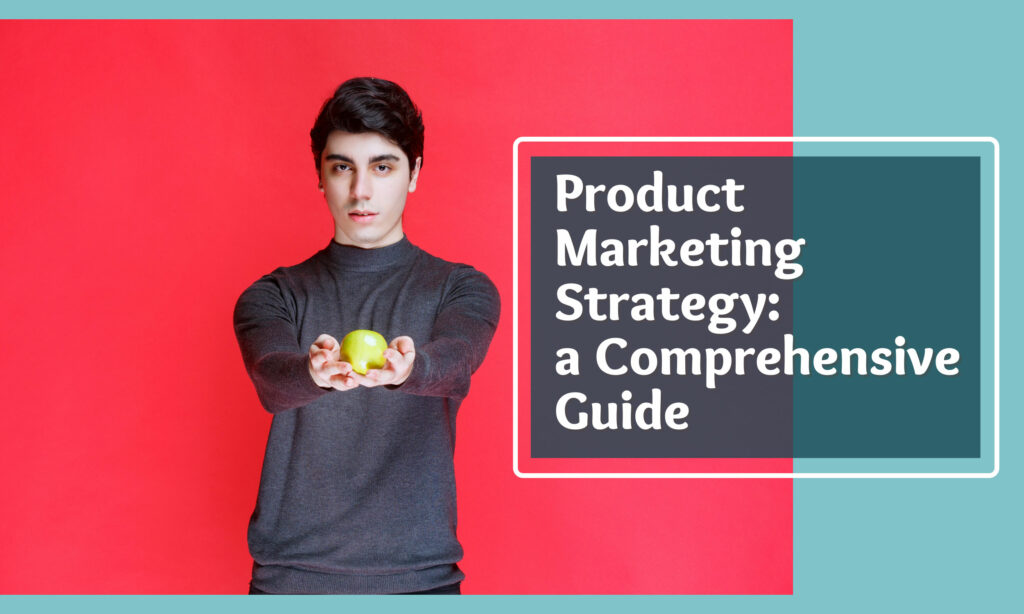If you want to catch and keep your consumer's attention, you really need to peruse the options available on your menu and give them something smart based on their preferences.
Your marketing strategy should not be based on your hunch but solid verifiable facts. In order to grow as a business, you need to know how your products & services are performing with your target audiences, how those consumers are responding to your campaigns, and how these customers feel about your brand.
Customer research can provide you with the missing information.
Peekage solutions: Customer insights solution
In today's consumer-centric world, research is key to personalization of products & services, and consistently delivering an excellent experience to your customers comes with a number of benefits, such as:
- Increased purchase frequency
- Higher average order values
- Better referrals and cheaper acquisitions
Additionally, acquiring insights on consumer needs gives you a strategic position over the race on delivering customers what they want -more personalized products and experiences. This way you stay ahead of your competitors and remain in line with consumers' needs.
At its core, consumer research focuses on understanding your consumers by exploring their attitudes, needs, motivations, and behavior as they relate to your brand & products. This helps you to better identify, understand, investigate and hold your customers.
It's nothing unexpected that the majority of professional advertisers make their strategic decisions after a phase of extensive consumer research process.
Read also: Differences Between Market Research and Consumer Insights Research
What Is Consumer Insights Research And Why It's Important For Any Brand?
Consumer insights research is the process of recognizing the inclinations, attitudes, inspirations, and purchasing behavior of the targeted consumers. Utilizing consumer research strategies on this data, shared characteristics among consumer groups are distinguished and classified into client segments and buyer personas. This information then used to make promoting campaigns focusing on a particular fragment or persona.
Consumer research is the key to enhancing your products & services and effectively advertising to clients who want to do commercial enterprise with you. Interviews, surveys, and other consumer research techniques are your dearest companions with regards to aiding your organization reliably to increment its income year on year.
Consumer research strategy is the procedure of gathering facts to first identify the target audiences and afterward focus on their inclinations, insights, attitudes, and shopping drivers for an item, service, or brand.
The main purposes of consumer research are:
- Formalize the ideal customer personas
- Upgrade brand positioning
- Discover new or similar consumers
- Get feedback on current products & services
- Mapping the customer decision-making procedure
Customer research is a part of market research that uses research techniques to provide actionable information about what clients need. Utilizing this data businesses can make changes in their items and services, making them more client-centric thereby expanding consumer loyalty.
Consumer research helps brands understand consumer psychology and create purchasing behavior profiles for them.
A business that has an in-depth comprehension of the client decision-making process is most likely to design an item, decide on a certain price for it, establish a distribution path and promote a product based on customer research insights such that it produces increased consumer satisfaction and loyalty.
The ultimate goal of consumer research is to make a more profound understanding of your target client. You need to know what they care about and what impacts them to make purchasing decisions. This helps you to target them with more customized and significant brand experiences.
Consumers are now inundated with various options & choices and they have boundless data about these products readily available. In fact, they have power over their choices and want only the best.
So how do you make an unforgettable customer experience? By research!
By identifying the needs and inclinations of your clients, you can develop effective methods and strategies to use in your marketing plan. This will help you:
- Leverage your brand positioning compared to the competitors
- Help empower your marketing and product strategy
- Exclude weak points and lessen redundancies
- Remain in line with client opinion ahead of new product launches
- Draw in more clients
- Set the optimized price for your products
- Produce the proper marketing message
- Increase how much your clients spend
- Increase how frequently your clients spend
- Increase your sales
- Decrease your costs
- Refine your approach to customer support.
Now that you know what consumer research is and you understand its importance in developing your business, let's take a closer look at how it's done; the process & steps of conducting consumer insight research.
Also read: How Consumer Insights Help Your Business Grow
Consumer Research Process: Steps and Best Practices
The consumer research process is an organized approach to understanding customer behavior and preferences, which helps businesses make informed, strategic decisions. Here’s a step-by-step guide to conducting effective consumer research:
1. Develop research goals
Developing research goals is actually answering the question; "why is the research being conducted? to find out what?" A statement of consumer research objectives can help emphasize the purpose.
2. Define your research personas
A target consumer addresses the specific client segments and ideal buyer personas you wish to analyze.
3. Select your research methods and tools
Before you jump into the research phase, you should create a supporting "foundation". That is to distinguish your key method for gathering information and data.
Consumer data comes in two structures:
Quantitative - data, in the form of numbers
Quantitative consumer research includes extracting facts and statistics from customer opinions. By posing questions like, "how many", "how often", or "how likely", you can record customer needs and inclinations as specific numbers.
Utilizing a qualitative research method, you can gather information around measures such as duration, price, amount, length, etc. You can then utilize this information to shape your product's marketing.
Qualitative - non-numerical data that describe and characterize
A qualitative consumer research strategy gathers the conversational voice of customers (VOC), making sense of the inspirations behind customer behaviors. Open-ended questions, conversations, and observations can help us answer the whats, whys, and hows of consumers' decisions. Furthermore, develop a better comprehension of the consumers' attitudes, beliefs, and values.
Also read: Seven Consumer Research Methods; 2022 Version
4. Collect secondary data
Secondary research tries to interpret your audience's behaviors by utilizing internal and external data. CRM or social media analytics, and different kinds of BI tools come to use here. Utilizing external information such as trend reports, market statistics, and public polls can also help obtain a more accurate image of your target clients.
Secondary research is a strong method to analyze the competition, understand your actual position in the market, and discover new secondary consumers.
Collect secondary data as the earliest stage of your research, it helps finding out if the research has been conducted before and if there is any information that can be used by your business to make informed decisions regarding customers.
Secondary research adds additional background information to your brand strategy. By discovering what your competitors do and finding out what other factors and variables affect the demand on the market, you can refine your brand differentiation on the market.
Thus, as part of customer research, you need to assess the competition. Specifically, collect data about:
- Competition market positioning
- Brand differentiators
- Macro market trends
- Niche market trends
5. Primary research
Primary research can be an exploratory and explicit phase of your consumer research. In the principal case, you are projecting a wider net to comprehend the general customer opinion and market trends. Exploratory research is helpful for consumer segmentation and buyer persona development.
Explicit consumer research plans put the magnifying lens on distinguished areas of interest like brand preference or product usability. For this situation, it's a good idea to work with a specific consumer segment and ask questions related to a specific issue.
In primary research brands or businesses collect their own information or employ a third party to gather information for them. This kind of research utilizes different data collection methods (qualitative and quantitative).
6. Collect and analyze information
Data is gathered and analyzed and inference is drawn to comprehend client behavior and purchase pattern.
7. Prepare a report
At the final stages of your consumer research process, a report is prepared based on all the findings by analyzing information collected so that businesses are able to make informed decisions and think of all probabilities related to customer behavior. By incorporating the study, businesses can become more customer-centric and provide products or services that will help them achieve customer satisfaction.
8. Put consumer research to action
The ultimate objective of consumer research is to illuminate your actions. There are numerous excellent ways of utilizing customer research information:
- Refine your brand positioning and brand statement
- Develop strategies for engaging with secondary clients
- Foster new creative and collateral for advertisement campaigns
- Refine your advertisement targeting to lessen promotion waste
- Expand into new markets with more confidence
How does Peekage run market research?
Utilizing its app-based platform, Peekage conducts market research by product sampling.
Clients share their information through the application and then the Peekage team discovers the right users to test your product or services and provide you feedback. This strategy is the most efficient way to invest the market research budget and gain actionable insights from your target market.
Read Also: Ultimate guide: product sampling strategies, methods & techniques
How To Optimize The Process Of Conducting Consumer Research
By providing proper consumer research insight, strategies that are utilized to draw in customers can be improved and brands can make a profit by knowing what customers need exactly. It is also important to understand the buying behavior of customers to know their attitude towards businesses and products.
Artificial intelligence helped advertisers & marketers with accomplishing precise targeting, effective optimizations, better analysis, and so much more. However, before these items come into play, understanding the customer is on top of any advertiser's list.
Optimizing consumer research can really make the entire procedure more effective, saving businesses tons of time assembling and analyzing data that is of little worth.
There are 4 different ways AI can optimize the consumer research process.
Recruitment Efficiency
Your customer base is expanded. Panel recruitment parameters that expanded properly in one place may not function admirably in an alternate situation. And with steadily developing markets, checking only a couple of fundamental parameters like age, ethnicity, and education is hard enough for a team of staff to work on for weeks or even months.
businesses need niche parameters. For example, interests, work profiles, income level, language proficiency, and more to draw significant insights that give them an upper hand in the market. This kind of information uncovers sweet spots in the target clients that have a high chance of a conversion.
Panel Relevancy Map
Words usually can't do a picture justice. In advertising, this image is worth thousands of hours of man work. In fact, we are discussing the times when advertisers analyze various segments and try to find similar client bases that can be clustered together. AI can do this in a matter of seconds, if not real-time. It analyzes millions of psychographic and demographic elements alongside other incidental factors and makes a relevancy map. This helps the advertiser with building panels of relevant clients based on the targeting variables that the research requests.
Statistically Accurate Panel
You can simply not include all of your clients for research purposes. Yes, you can do it by taking a representative sample of your consumer's society. This means your panel will contain at least one or more clients from each segment of your overall target client. This way you have a panel that is statistically the most accurate representation of your clients.
Engagement Efficiency
While a statistically accurate panel is of importance, the research can only be called effective and successful if the optimal number of consumers take part in the research. Here, the AI helps the advertiser get the maximum number of research respondents at the minimum cost. Engagement patterns help the AI to rank the quality of client segments. The higher the engagement with the research, the higher the quality of the client.
Research that creates impact
In fact, finding out what the client is thinking is technically impossible. businesses can still be very accurate by using the agility and scalability of AI. Making accurate and reliable client panels, running AI-led agile research, and developing strategies based on them is the guaranteed plan for successful consumer research.
Conclusion
Consumer research is a significant endeavor; however, the payoffs are extravagant too. Learning who your consumers are, how they think, and what prompts them to buy your products or services is essential to improving your market presence, growing brand value, and of course income numbers.
Utilizing the above eight steps, you can figure out how to coax clarity out of the tumultuous pile of analytics data and spoken customer insights. Keep in mind: a clear and optimal research method, succinct hypothesis, and supporting tools are the frameworks you need to run effective consumer research.
What customers need should be a part of market research and ought to be carried out routinely. Consumer research provides you with in-depth data about the needs, wants, expectations, and behavior of consumers.




